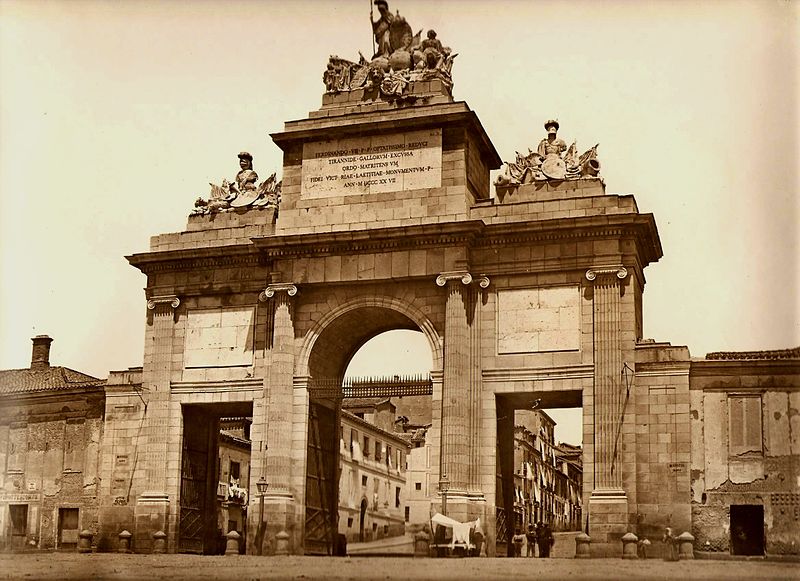La Puerta de Toledo, historia y origen

The Gate of Toledo is one of the five royal gates in Madrid, alongside Alcalá, Atocha, Segovia and San Fernando. Remember that the city had a wall and access to it was controlled through fifteen gates and passes that were open during the day and closed at night.
In fact, there were four gates with this denomination throughout the history of Madrid, being the current one the most recent one and the only one that has preserved itself. As the city grew, new gates were built along Calle Toledo in order to gain in size.
Construction began on the current one in 1813, during the Napoleonic invasion, in order to commemorate the arrival of Joseph Bonaparte. Paradoxically, in 1827, the year when the gate was finished, it was used to celebrate the victory over Bonaparte and the restoration of King Fernando VII to the throne, according to what can be read in the interior facade: “To Fernando VII the desired, Father of the Homeland, restored to his people, exterminated the French usurpation, the City of Madrid established this monument of loyalty, triumph and joy”
Its architect was Antonio López Aguado, a disciple of the famous Juan de Villanueva, author of other important monuments in Madrid such as the Teatro Real, the Casino de la Reina, the Palace of the Duque de Villahermosa (home of the Thyssen-Bornemisza Museum) or the Villanueva building which today is part of the Prado Museum.
The sculptures that decorate its superior part were designed by José Ginés and carved by Ramón Barba and Valeriano Salvatierra, and they present, on the south side, an allegory of Spain and its provinces; on the interior side, there is the city badge. They also adorn both the sculptural groups, similar to those of the Puerta de Alcalá, that represent decorative trophies.
The Gate of Toledo is of Neoclassic style and has three openings: two rectangular ones and one in the shape of an arch. It is built in granite with limestone appliqués as decorative elements, crowned by a sculptural ensemble made of stone. These heavy materials caused comical songs among the people of Madrid, known to have a big sense of wit, in which they referred to the Gate of Toledo as “an elephant made of stone stuffed with cobbles”.
Categories: Madrid Turismo



Leave a Comment